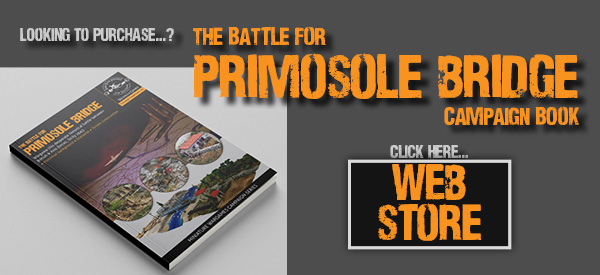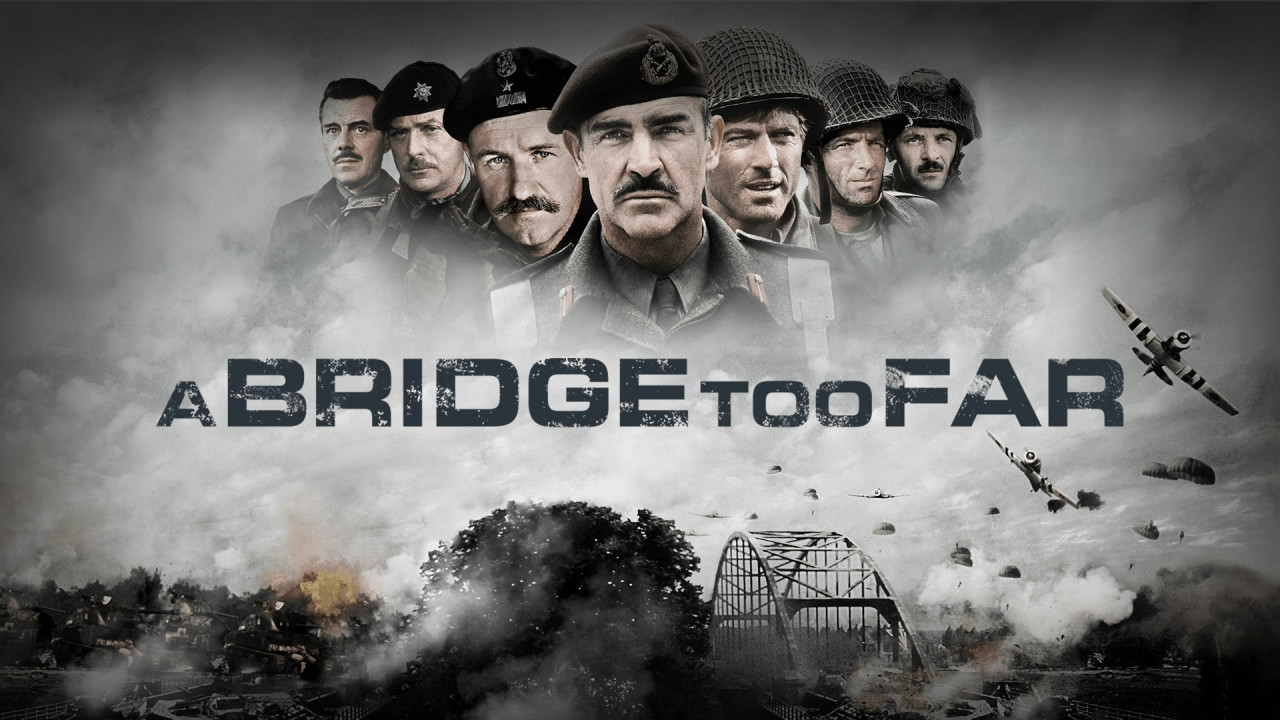A Bridge Too Far
As a build up to me rewatching A Bridge Too Far movie (which really is a true story) with mates in a few weeks time I thought I would post a few interesting facts about the movie (no spoilers). Comment below (and chose "Subscribe to this blog post") and I will update the chat with interesting titbits over the next few weeks.
A Bridge Too Far is a classic war film that was released in 1977. Directed by Richard Attenborough, the movie depicts the Allied attempt to capture several strategically important bridges in the Netherlands during World War II. Based on Cornelius Ryan's best-selling book of the same name, A Bridge Too Far features an ensemble cast of talented actors, including Sean Connery, Michael Caine, and Anthony Hopkins.
This gripping film not only provides a thrilling account of a major military operation, but also offers a deeper exploration of the human cost and sacrifices made during wartime. With its powerful storytelling, intense battle sequences, and rich characterization, A Bridge Too Far has become a beloved war movie that continues to captivate audiences to this day. (content borrowed from https://facts.net, I'm sure they won't mind... :-/ )
Comments 17
The movie “A Bridge Too Far” was released in 1977.
Directed by Richard Attenborough, this war epic takes us back to the events of Operation Market Garden during World War II.
“A Bridge Too Far” is based on the book by Cornelius Ryan.
The film adaptation brings to life Ryan’s detailed account of the Allied operation to capture several key bridges in the Netherlands.
The star-studded cast of “A Bridge Too Far” includes Sean Connery, Michael Caine, and Anthony Hopkins.
These legendary actors brought depth and authenticity to their respective roles, captivating audiences with their performances.
The film was shot on location in the Netherlands.
The picturesque Dutch countryside served as the backdrop for the intense battle sequences, adding an extra layer of realism to the movie.
“A Bridge Too Far” was nominated for three Academy Awards.
The film received nods for Best Art Direction, Best Cinematography, and Best Film Editing, highlighting its technical and visual achievements.
The movie features several actual veterans of Operation Market Garden.
Some of the soldiers who participated in the real-life operation served as consultants on the set, providing invaluable insights and ensuring accuracy.
The iconic bridge used in the film is called the John Frost Bridge.
Located in Arnhem, Netherlands, the bridge played a crucial role in the battle and has since become a symbol of the movie and the operation.
“A Bridge Too Far” showcases the complexities and challenges of large-scale military operations.
The film delves into the strategic decisions, logistical hurdles, and human sacrifice involved in executing ambitious wartime plans.
The movie explores the perspectives of both Allied and German forces.
By presenting the viewpoints of different characters on both sides of the conflict, “A Bridge Too Far” offers a comprehensive portrayal of the battle.
The title “A Bridge Too Far” references a quote by British Lieutenant General Frederick Browning.
When discussing the ambitious plan to capture multiple bridges, Browning remarked, “I think we may be going a bridge too far.” The phrase became synonymous with the operation and the film.
The production of “A Bridge Too Far” faced numerous challenges.
From coordinating large-scale battle scenes to dealing with unpredictable weather, the filmmakers had to overcome various obstacles to bring the story to life.
The movie offers a balanced portrayal of the successes and failures of Operation Market Garden.
“A Bridge Too Far” is often praised for its attention to historical accuracy.
The filmmakers went to great lengths to recreate the uniforms, weapons, and vehicles used during the actual operation, creating an immersive World War II experience.
The film received mixed reviews upon its release.
While some critics praised its epic scale and performances, others felt it was overly long and lacked focus.
“A Bridge Too Far” has since gained a cult following and is considered a classic war film.
Its realistic portrayal of war, sprawling ensemble cast, and historical significance have cemented its status as a must-watch for fans of the genre.
The movie explores themes of heroism, sacrifice, and the human cost of war.
“A Bridge Too Far” raises thought-provoking questions about the nature of warfare and the impact it has on individuals and societies.
The film’s runtime is approximately 2 hours and 55 minutes.
With its epic scope and multiple storylines, “A Bridge Too Far” takes its time to fully develop its characters and narrative.
“A Bridge Too Far” achieved moderate success at the box office.
While it didn’t become a blockbuster hit, the movie garnered a loyal following and remains a notable entry in the war film genre.
The movie features powerful and memorable performances from its ensemble cast.
Actors like Sean Connery, Michael Caine, and Anthony Hopkins deliver nuanced portrayals of their characters, adding depth and emotional resonance to the story.
The movie has inspired a number of documentaries and books exploring the events of Operation Market Garden.
“A Bridge Too Far” ignited a renewed interest in this lesser-known chapter of World War II history.
The film’s budget was approximately $22 million.
Considering the scale of the production and the number of renowned actors involved, this budget was considered substantial for its time.
“A Bridge Too Far” features aerial shots and cinematography.
The filmmakers utilized helicopters and innovative camera techniques to capture the vastness and scope of the battle.
Facts About Operation Market Garden
(These next set of facts are 'borrowed' from history hits web site and its the truth according to them )
About Operation Market Garden
Operation Market Garden was the name given to the Allied military operation in the Netherlands that occurred between 17 and 25 September 1944. The plan was centred around Allied airborne units seizing the main bridges across the lower Rhine and its neighbouring rivers/tributaries, and holding them long enough for Allied armoured divisions to reach them. From there, the Allies could strike into the heartlands of the Third Reich, ending the war by Christmas.
The Allies believed the Germans were crumbling
By September 1944 the Allies were in a state of euphoria. The speed of the allied advance since the Normandy landings, alongside news of Stauffenberg’s failed plot to kill Hitler, convinced British and US Intelligence that the Wehrmacht had reached a state of war weariness and would soon disintegrate.
In fact, this wasn’t the case. The failure of Operation Valkyrie had resulted in the German army coming under the full control of the SS. German soldiers were now going to be forced to fight on to the very end.
And now for the final version written by no other than Genuine British para, amateur historian and super fan of the movie (and my brother) Dan.
One of the historical advisors on the movie during filming in 1976 was Colonel John Waddy OBE, who was well qualified for the task: Col Waddy had jumped in on September 18th 1944 as part of 156 Para Bn onto a Drop Zone that has been set ablaze and was partially held by German forces. Having been wounded 4 times he was eventually taken prisoner in the battle days later.
Maj General John Frost also advised on the movie, and initially hated the selection and mannerisms of Anthony Hopkins who was playing him in the movie. In the latter stages of filming a mutual respect had grown between the two.
Col Waddy, Maj General Frost and Richard Attenborough did their best to influence the studio to respect history of the events, but were at times overruled by the powerful studio who wanted the movie to appeal to the American audience on release.
During Filming, Edward Fox (playing Gen. Horrocks), questioned Col. Waddy about the manner in which a General would refer to his driver. When asked if if would be the drivers first name used in conversation, Waddy advised "always last".
Immediately after the conversation, Fox filmed the scene where Horrocks is driven to the venue of the XXX Corps Briefing (where he tells the assembled officers "This is a story you will tell your grandchildren!..."). On getting out of the jeep to walk inside, he can be heard to say to his driver; "Thank you Waddy!".
The character in the movie of Maj Carlisle, 2nd Para Bn. is actually a composite character who depicts parts of the real life exploits during the battle of Maj. Allison Digby Tatham-Warter DSO who famously DID carry and wield a brolly into battle, and LT. John Hollington Greyburn VC, who was the only Victoria Cross recipient for Op. Market Garden whose award came from engagements at the bridge itself.
LT. Greyburn was posthumously promoted to Captain, as that was the appointment he had held as 2iC of A Company and attachments for much of the action at the bridge.
Although the popular white flag scene scene with Carlisle and Frost wasn't factually correct, not only did it capture on screen the spirit of the defenders- but it was based on an actual event; the Germans DID send a captured Para Sapper back to the 2nd Para Bn. perimeter with an offer for the British to surrender- and Frost refused, muttering about how the Germans could go to hell.
One of the historical inaccuracies in the movie came from simple operational practice; The men of the Parachute Regiment who had been tasked with jumping for the film were not allowed to drop without reserve parachutes- which were not introduced in British service until 1955.
"A Bridge too Far" remains one of the greatest war movies of all time ( THE greatest movie of all time!- Dan) with debatably the greatest cast ever assembled...watch it and enjoy it!



